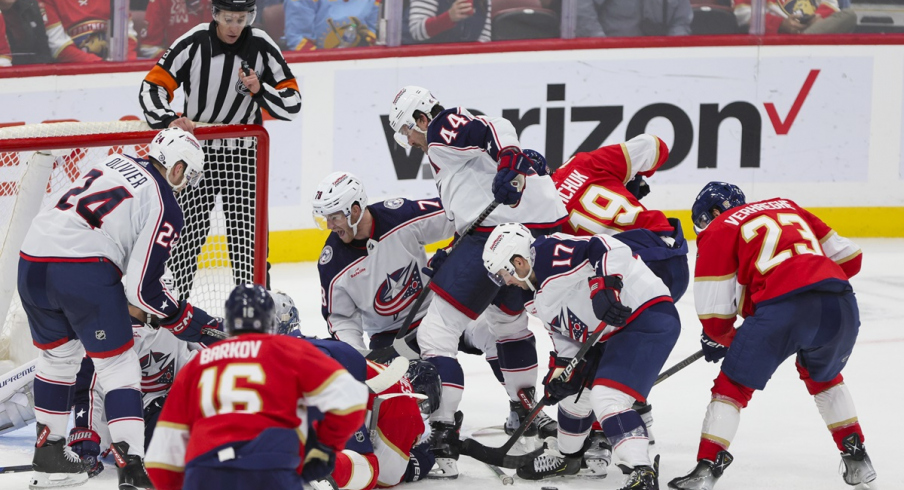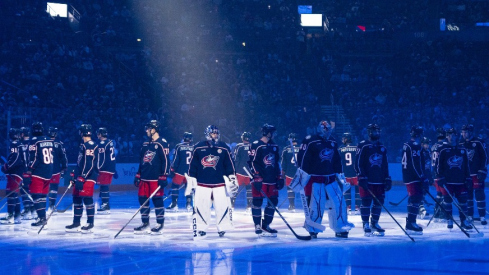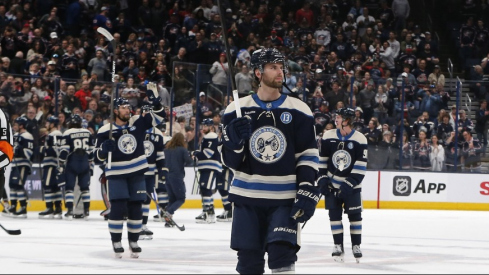The Columbus Blue Jackets have given up 39 goals in 12 games this season, for an average goals-against of 3.25. That's certainly not anything to write home about, but it's a drastic improvement over last season when the club gave up 330 goals, an average of 4.02 goals/game.
Many of the improvements are intuitive. The club added a healthy Zach Werenski and Jake Bean, traded for Ivan Provorov and Damon Severson, and promoted top prospect David Jiricek. It's not hyperbole to say that the team has an entirely revamped defense corps from a year ago. Other factors have likely contributed too, such as adding a plethora of new forwards to the lineup and moving others, like Jack Roslovic, away from center. And finally, new head coach Pascal Vincent implemented his new system.
Let's talk about that system.
Per the popular hockey analytics website hockeyviz.com, the Blue Jackets have improved dramatically year-over-year in shot suppression. The below shot maps show the club's shot volume against from different locations (both maps 5v5). The darker the color, the more volume allowed. Blue indicates they are better than league average from that specific area, and red that they are allowing more than league average. First is 2022-23, then 2023-24.
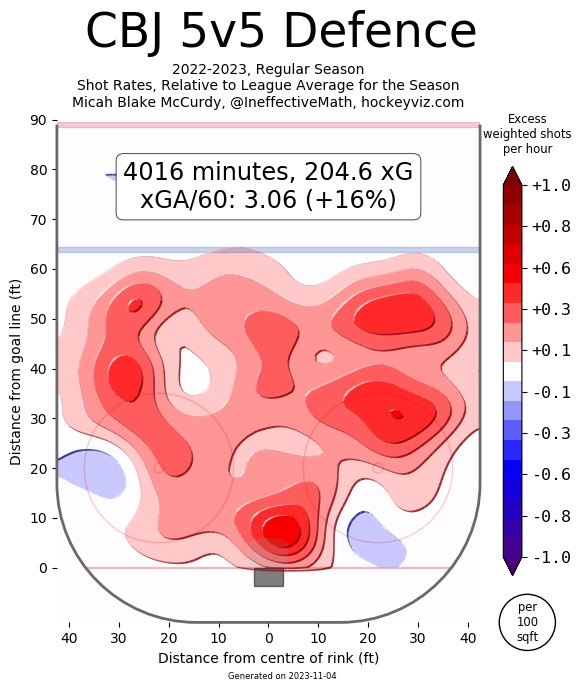
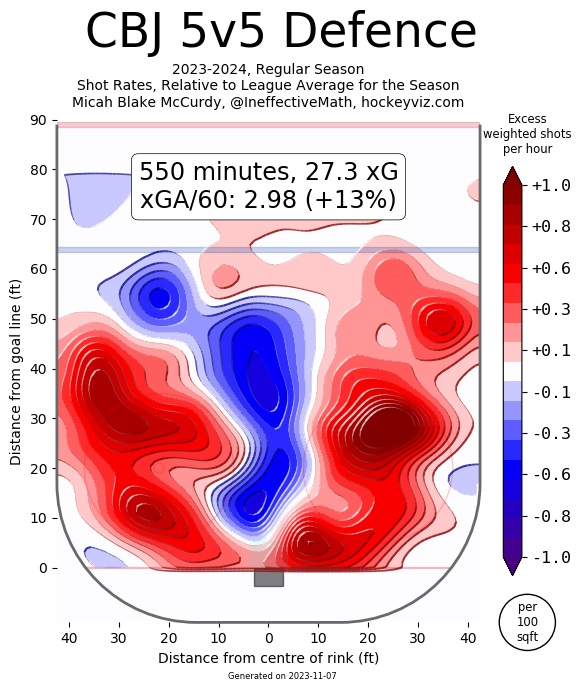
While 2023 shows a significant increase in blue, it's not all good. It's clear as day that Vincent is prioritizing the net-front and slot; the areas just outside the net are evidence of that. However, it's also clear that the club is basically satisfied to concede pucks/shots on the outside portions of the zone. This matches the 'eye test'. The club collapses to the middle of the ice when the opposition has the puck and plays almost like they're killing a penalty when opposition players have the puck on the perimeter. That is in stark contrast to many NHL teams, who force the puck carrier to make a contested play, regardless of where they may be on the ice.
The argument for and against this strategy is a philosophical one. Vincent's strategy is to allow 'less dangerous' opposition puck possession and limit high-danger chances. Other teams (thinking of Vegas, Carolina, etc.) make it a point to limit the opposition's puck possession time in their defensive zone, full stop. The less time playing defense, the better, they figure, even if it means a potentially dangerous lapse in coverage. Here's a screenshot from Monday's game against the Florida Panthers that shows this collapsing strategy in action.
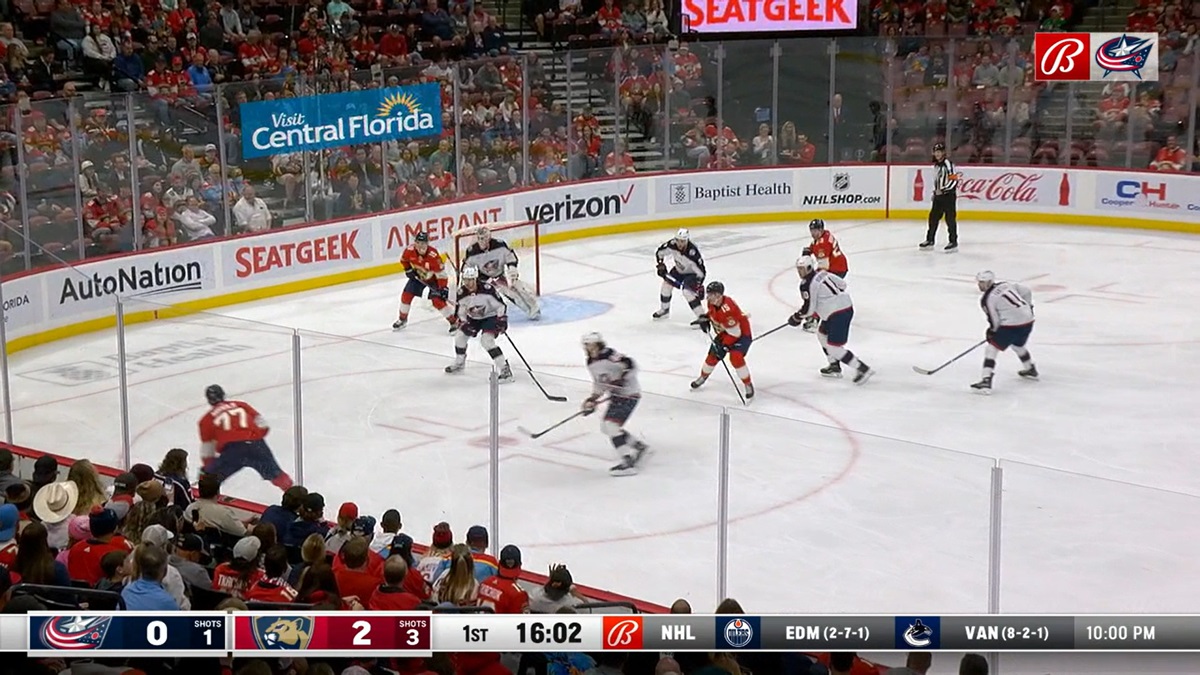
All five Blue Jackets are in 'the house', the area just in front of the net where the highest danger chances tend to arise. Panthers defenseman Niko Mikkola is in a non-threatening position, and the Blue Jackets are able to get the stop. Seconds later, they're even tighter.
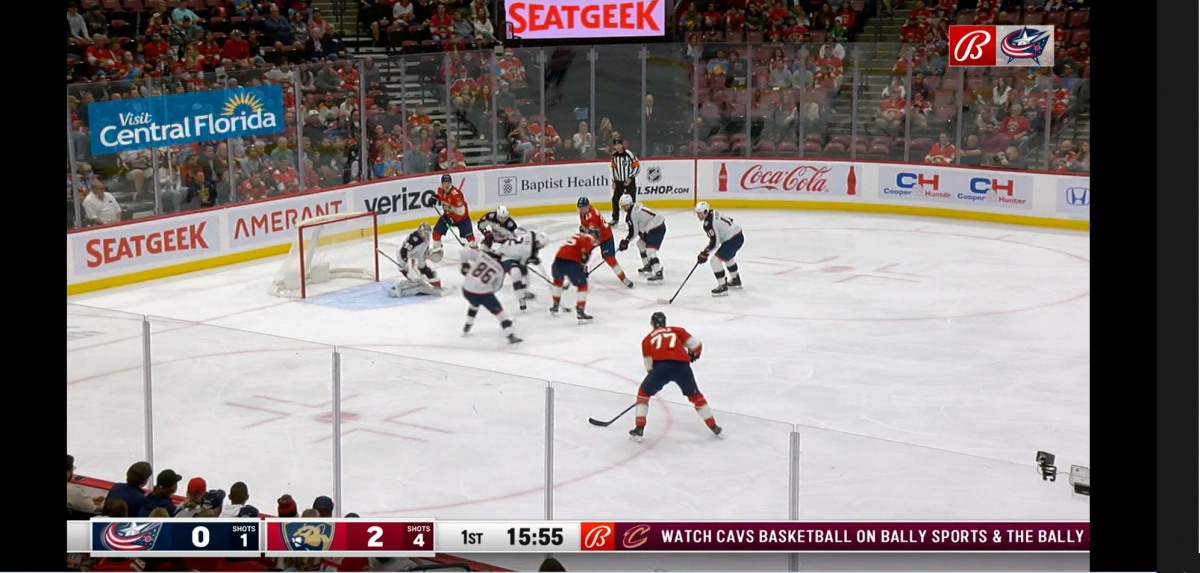
The Panthers didn't score on this play, but when the Blue Jackets finally did manage to gain possession of the puck, they iced the puck. That's a mixed bag.
That result is somewhat intuitive, too. The Blue Jackets' collapse-style defense may somewhat limit grade-A chances, but if/when they do win the puck, they are not in a position to exit the zone with possession, because all of the players are - by design - tight. Separately, I wonder if players like Johnny Gaudreau, who flourish on rush plays and quick strike opportunities, are acutely impacted by this strategy. That vicious cycle - allowing time to pass by purposefully playing a passive defensive zone structure, then having no options (or legs) left to counter-attack, rinse, and repeat, could wear on a team.
Something worth mentioning is that, while it hasn't been excellent, the goaltending seems to be much improved by a year ago. Again, some of that surely traces back to defensive improvements, and one could even argue goalie coaching, but it's fair to suggest that some (much?) of the improvements are due to this defensive system. Put simply, NHL goalies are very good at stopping pucks from the outside and on predictable patterns. By preventing shots from the slot and mucking up the middle of the ice (and thus theoretically taking away cross-ice/dangerous passes), the goalies have responded by playing well beyond their play from last season. Per hockey-reference.com, this season Elvis Merzlikins has given up -1.7 goals saved above (below) expected, whereas Spencer Martin has saved 3.5 goals above expected. For reference, last year Merzlikin's had a brutal -24.9 GSAA.
It's early, and the club is still working through some kinks. There are so many new faces and new roles, and it's not fair to say that this is a finished product. But through 12 games, it's fair to say that the defense has improved but is still far from perfect.
